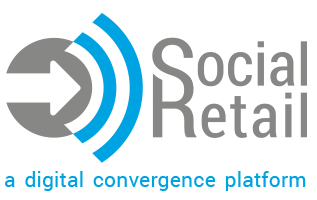Many marketing firms make promises without taking adequate efforts to prove they followed through. A company spending capital or hard-earned revenue on any sort of advertising efforts should naturally be able to chart positive returns to justify the expense. Instead, the effectiveness of campaigns is often up in the air.
Organizations that want to be able to determine real, actionable numbers must have not only have access to adequate data but also the means to interpret it. Here are some proven guidelines for setting up an ROI of digital advertising analysis that reveals facts rather than speculation.
Start with a Broad View
Companies seeking to calculate ROI for anything, not just digital advertising, should first rule out mitigating factors that could sink their ship before it even leaves the harbor. Digital advertising campaigns can be effective at generating sales lift, but only if every other component is already in place.
For instance, starting an ambitious social media campaign for a product line may seem like a great idea on paper. However, a brand with notoriously bad customer service will likely give a platform for people to air grievances rather than creating positive sentiments. Analyzing customer/client feedback, the reliability of shipping schedules and quality control can ensure that ROI measurements on digital advertising will not come back with puzzlingly abysmal results.
Pick an Accurate Baseline
A proper experiment will use a control group to compare variables. In this case, the difference caused by the presence of digital advertising is what is being evaluated. While relying on historical data may seem like the best place to start, using two different markets can help rule out ongoing developments like growth or past problems.
Google and Pantene, for example, ran an ROI measurement experiment using two statistically identical regions. One was targeted with digital advertising, while the other had no digital advertising whatsoever. At the end of one month, retail store POS systems were tabulated for sales of Pantene products. What Google and Pantene discovered was that a digital campaign contributed 6% sales lift — 11% when combined with matching TV ad campaigns. Only by comparing two concurrent markets were they able to rule out time-sensitive variables.Decide on Meaningful Key Performance Indicators
One cause of businesses being unable to calculate true ROI stems from measuring easy-to-identify metrics rather than the ones that matter. A marketing company that suggests a massive Facebook campaign may point to a rise in overall “Likes” for their client’s Facebook page. Instead, that company should be looking at engagement and, more importantly, the inbound website visits resulting from social media campaigns.
Basically, to find true ROI a business must look at hard data, such as:
- Sales lift
- Increased conversion rates
- Increased spending per visitor
- Lead increase
- Cost per lead
Ideally, all of these KPIs should indicate positive activity across the board. Otherwise, the metrics could be revealing a kink in the customer journey. For instance, a doubling in leads but a stagnant revenue stream basically means that the conversion rate is now cut in half. Similarly, an increase in conversions but a high cost per lead means that the advertising methods could be made more effective.
Let Analytics Tell a Story
The most meaningful KPI will obviously be sales increase, but looking at others will help identify places where something has gone awry. Also, positive KPIs do not mean that staying the course could be the best plan of action. Correlation does not necessarily mean causation, so no brand should be willing to take positive outcomes at face value.
Instead, they should look for deeper clues and try new ways to get an even bigger response. Experimentation and increased efforts can yield results that reveal the best course of action for a company to take in the future. Anyone with a vested interest in growth should always be willing to try out something new with a test market to find out where the next key to success may lie that opens doors to industry dominance. Eventually, models can be predictive of future performance rather than struggling to interpret the past.
Only the most powerful methods can be able to digest all of this information. Digital Social Retail, the comprehensive customer acquisition and marketing platform, has a robust reporting an analytics tools, so you can convert the data generated from our modules into future sales dollars.
Our product makes managing multiple channels of your communication and acquisition activities simple with an easy to use, all in one dashboard and powerful analytics. Visit our product page to learn more.






